Glossary
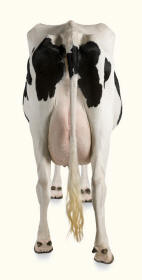
Gait
The pattern of movement of animals during (terrestrial) locomotion.
Gaits used by cats and dogs include the walk, the amble, the pace, the trot, the canter and the gallop.
Gaits used by cats and dogs include the walk, the amble, the pace, the trot, the canter and the gallop.
Fault
A characteristic of a pet that deviates from the breed standard.
Some breed standards specify characteristics that are undesirable, some of these being disqualifying faults.
Some breed standards specify characteristics that are undesirable, some of these being disqualifying faults.
Trot
A symmetrical, two-beat gait in which diagonally contralateral limbs move in unison.
This is an endurance gait, which allows coverage of ground at a reasonable speed but without expending maximum energy. The trot may, therefore, be maintained for hours.
This is an endurance gait, which allows coverage of ground at a reasonable speed but without expending maximum energy. The trot may, therefore, be maintained for hours.
Carpal Joint
A joint in the carpus.
Equivalent to the joints in the human wrist.
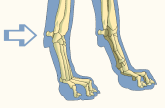
Equivalent to the joints in the human wrist.

Central Line
An imaginary line along the direction of travel.
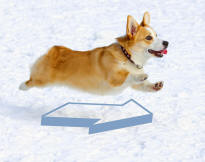

Tarsal Joint
A joint in the tarsus.
Equivalent to the joints in the human ankle.
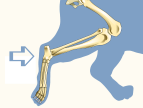
Equivalent to the joints in the human ankle.

Hindquarters
The hind region of the dog, from the loin.
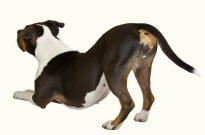

Fault
A characteristic of a pet that deviates from the breed standard.
Breed standards specify characteristics that are undesirable, some being disqualifying faults.
Breed standards specify characteristics that are undesirable, some being disqualifying faults.
Hock
The tarsal region or tarsal joint of the hind leg of a quadruped.
Also known (colloquially) as the heel or ankle.

Also known (colloquially) as the heel or ankle.






